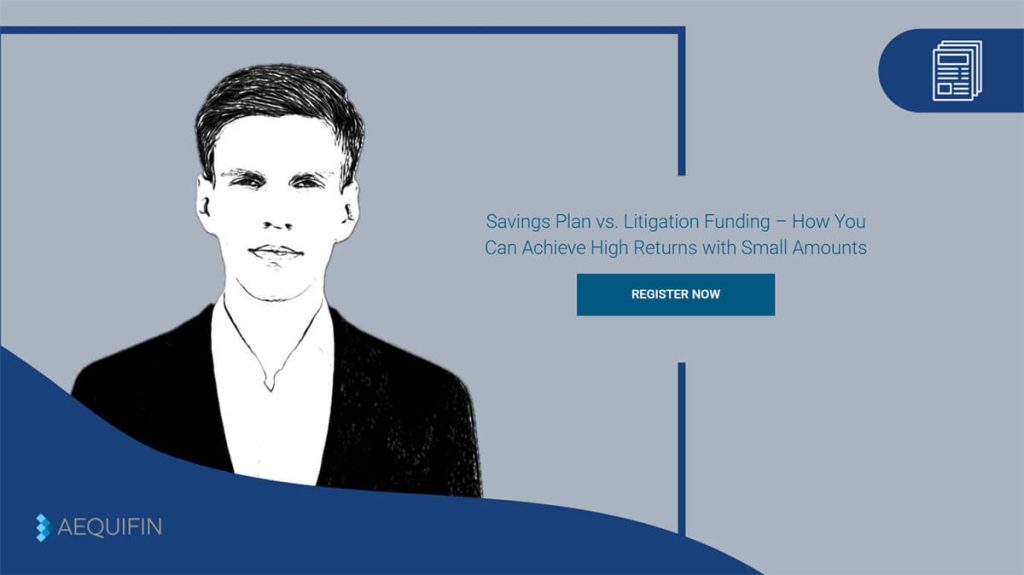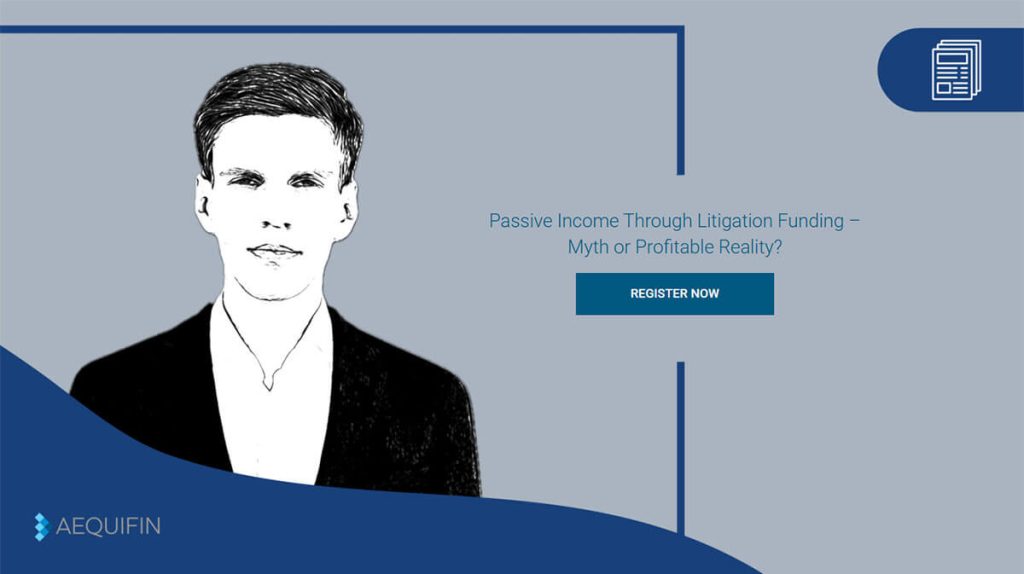The financial markets in 2026 remain a landscape of both opportunities and uncertainties. While interest rates stagnate at a high level and traditional savings models lose real value, interest in alternative investments continues to grow. Investors are looking for strategies that detach from market fluctuations and key interest rates while creating real value.
After the recent crash in the crypto market and ongoing trade conflicts between the US and China, attention is increasingly turning to asset classes with tangible substance.
From photovoltaics and P2P loans to litigation financing, the range of opportunities beyond traditional investments is expanding. The key factor is no longer just returns, but also the stability and independence of the asset class.
This article shows which alternative investments will truly stand out in 2026 and how litigation financing, as a relatively new alternative investment, compares to photovoltaics, P2P loans, and ETFs.
Alternative Investments 2026 – At a Glance
- Alternative investments are gaining importance in 2026 as interest rates stagnate and traditional models lose appeal.
- Photovoltaics, P2P loans, ETFs, and litigation financing are among the most relevant investment options beyond the stock market.
- Photovoltaics offer sustainable, predictable returns but require high initial capital.
- P2P loans attract investors with double-digit interest rates but carry default and platform risks.
- Litigation financing impresses with independence from markets and social added value, making it one of the most exciting alternatives in 2026.
1. What are alternative investments?
In 2026, alternative investments refer to assets that lie beyond traditional forms such as stocks, bonds, or savings accounts. They aim to generate returns that are independent of interest rates, markets, and geopolitical fluctuations.
What are examples of alternative asset classes?
- Photovoltaic investments: Participation in solar parks or private solar systems.
- P2P loans: Digital lending between private investors and borrowers.
- Private Equity & Private Debt: Investments in non-listed companies or private loans.
- Litigation financing: Participation in legal cases with profit sharing upon success.
- Commodities & Infrastructure: Physical assets as protection against inflation.
These alternative investments are gaining importance in 2026 because traditional savings models hardly deliver real returns anymore. Investors are increasingly seeking diversification, assets that develop independently from one another.
The advantage is clear
- Lower dependence on market fluctuations
- Access to real economic projects
- Potentially higher returns with moderate risk
For a long time, investors believed that a strategically diversified portfolio simply meant combining established ETFs with alternative investments. However, the decisive factor remains how transparent the model truly is and whether return and risk remain balanced in the long term.
2. Which alternative investments are truly worthwhile in 2026?
In 2026, investors focus on stability and substance. After years of volatile markets and geopolitical uncertainties, real assets and independent sources of return take center stage. However, not every form of alternative investment is equally convincing.
-
Photovoltaic investments
- focus on the global expansion of renewable energies, offer predictable but moderate returns (usually 4–7% per year),
- and depend heavily on location, sunlight, and government incentives.
- For investors with a long-term horizon and a focus on sustainability, solar energy remains attractive though it requires high initial capital and offers limited liquidity.
-
P2P loans
- enable digital lending through online platforms, promise interest rates between 8% and 12% annually, but carry default risks and weak regulation.
- Those who invest in P2P should diversify broadly and understand the platform risk.
-
ETFs and funds
- are considered a solid foundation investment,
- liquid and transparent, but remain heavily influenced by market cycles.
- After the record year of 2023, many indices in 2026 show only moderate growth.
-
Litigation financing
- a still young but rapidly growing investment class,
- allows participation in legal cases, and its returns are independent of interest rates or markets.
- In 2026, it is regarded as one of the most exciting alternatives for investors seeking uncorrelated returns and a combination of financial and social value.
One thing should be made clear from the start. The most attractive alternative investments in 2026 combine independence, transparency, and predictable returns. While photovoltaics and P2P mainly offer sustainability and interest advantages, litigation financing opens up a distinct asset class far removed from traditional market logic. In the following, we take a closer look at these alternative investments in 2026.
IN JUST 5 MINUTES:
3. Is photovoltaics a chance or a risk as an alternative investment?
The trend toward sustainable investments continues to dominate the landscape of alternative assets in 2026. Photovoltaics are considered one of the most popular alternative investments, especially among investors who value ecological impact. However, not every solar project delivers what it promises.
How does a photovoltaic investment work?
- Investors participate directly or through funds in solar power plants.
- Returns are generated through the sale of the produced electricity.
- The yield depends on location, subsidies, and maintenance costs.
What are the advantages of investing in photovoltaics?
- Sustainable and environmentally friendly
- Relatively stable cash flows with long-term contracts
- Low correlation to stock markets
What are the risks of a photovoltaic investment?
- High entry costs (often starting from €5,000 and upward)
- Dependence on weather, technology, and regulatory changes
- Low liquidity, resale usually possible only on the secondary market
4. Are P2P loans with high interest rates also a high risk?
P2P loans have been among the most popular alternative investments for years. The principle is simpler than it might seem at first. Private investors lend money directly to individuals or companies, without a bank as an intermediary. The respective platform handles the technical and organizational processing.
Especially after the insolvencies of several European P2P platforms in recent years, the confidence of many investors has declined. Those who invest in P2P loans should realistically assess the default risk and diversify broadly.
How does P2P investing work?
- Investors select loan projects themselves or use automatic diversification features.
- Borrowers pay interest rates that can range between 8% and 12% per year.
- Platforms earn money through fees and loan facilitation.
What are the advantages of P2P?
- Attractive interest returns possible
- Low entry threshold (often from €50)
- Easily managed digitally
What are the risks of P2P?
- Payment defaults due to loan failures or economic crises
- Varying regulations between countries
- Platform dependency and risk of provider insolvency
5. ETFs and funds as classics with limited protection
ETFs (Exchange Traded Funds) and investment funds will remain the backbone of many private investor portfolios in 2026, even though they do not represent a new form of alternative investment. These funds are considered transparent, cost-effective, and easy to trade, but their performance depends heavily on global markets, as we have recently seen.
According to statistics, ETFs are also among the most popular investment vehicles for private investors and their number continues to grow. According to shareholder figures from 2024, around 10.5 million people in Germany invest in funds or ETFs. This represents an increase of about 180,000 compared to the previous year.
After years of booming growth, many funds are now facing revaluation. Rising corporate interest rates, geopolitical tensions, and persistently high inflation have reduced the profits of many publicly listed companies. Especially technology and growth stocks, once the main drivers of ETF returns are showing increasing volatility. Moreover, a market correction or crash in the coming months cannot be ruled out.
How does an ETF investment work?
They replicate well-known indices such as the DAX, MSCI World, or S&P 500, allowing broad diversification across numerous companies and industries.
Investors buy shares in a fund that precisely mirrors the performance of an index.
Profits are generated through price increases and dividend payments from the companies included in the index.
Management fees are very low compared to actively managed funds.
ETFs can be traded on the stock exchange at any time, making them particularly flexible as an alternative investment.
What are the advantages of an ETF?
- High liquidity and easy implementation through savings plans
- Broad diversification across many industries and countries
- Ideal for long-term wealth accumulation
What are the disadvantages of an ETF?
- Market dependency, when indices fall, the ETF value falls as well
- No stability during crisis periods
- Limited control over individual holdings
- No real protection against inflation or geopolitical risks
Many investors continue to rely on index funds because they are easy to understand and reliable over the long term. However, market volatility has increased. A look at the MSCI World shows that after the record years of 2021 and 2023, annual returns in 2025 were already below 4%. At the same time, the risk of short-term price losses has risen noticeably.
The desire for returns remains, but without daily market volatility. This is where litigation financing offers an exciting alternative. It is independent of indices, interest rates, and economic cycles. Its profit is based solely on legal success, not on market movements, thereby opening up an entirely new form of diversification.
6. How attractive is litigation financing as an alternative investment?
While many types of alternative investments depend directly on interest rates, stock prices, or economic cycles, litigation financing follows an entirely different logic. Investors participate in the funding of legal cases and receive a share of the awarded amount if the case is successful. If the plaintiff loses, the financier covers the costs.
This makes litigation financing one of the few uncorrelated asset classes that operate independently of the economy, inflation, or geopolitical developments.
How does the litigation financing model work?
- Platforms like AEQUIFIN bundle legally reviewed cases and make them accessible to sponsors.
- Investors provide capital that is used to finance lawyers, expert reports, and court costs.
- In the event of a successful verdict or settlement, they receive a percentage share of the proceeds.
- If the case fails, the risk is limited to the invested amount, with no obligation to contribute additional funds.
Advantages at a glance
- Independent of stock markets and interest rates, returns depend solely on legal success.
- Social value, access to justice for people who otherwise could not afford legal action.
- Transparency because every case is legally reviewed before approval.
- Accessible even for small investors, entry possible with relatively small amounts.
Risks at a glance
- Capital is tied up for the duration of the case (illiquidity).
- Outcome depends on the legal result.
- No guaranteed return, but a performance-based model.
The growing professionalization of the sector and digital platforms such as AEQUIFIN are making litigation financing accessible to private investors for the first time in 2026. It offers an investment opportunity that is unaffected by interest rate policy or market trends combining return potential with tangible social impact.
7. Why is litigation financing the most exciting alternative in 2026?
In an environment of stagnant interest rates and volatile markets, investors in 2026 are looking for investments that detach from traditional economic cycles. Litigation financing meets exactly this criterion, combining profit potential with social impact.
- Independence from markets
While stocks, ETFs, or P2P loans are heavily influenced by economic data, litigation financing is uncorrelated with markets and interest rates. The success of a case depends solely on legal arguments, not on market fluctuations. - Social value
Litigation financing is more than just a high-yield investment. It enables individuals and companies to pursue legitimate claims that they might otherwise abandon due to cost barriers. Investors thus contribute to equal opportunities within the legal system. - Professional risk assessment & diversification
Platforms like AEQUIFIN only accept cases that have been legally reviewed and assessed as having a high probability of success. For sponsors, this means a calculable level of risk combined with attractive return potential. Additionally, risks can be reduced through diversification and participation in multiple cases at the same time. - Low entry barriers
While photovoltaics or private equity require large investments, access to litigation financing is possible with smaller amounts. This makes an asset class previously reserved for institutions accessible to private investors for the first time. - Long-term perspective
Legal proceedings can take several months or even years, which means capital commitment but also stable earning potential. Within a diversified portfolio, litigation financing can therefore become a strategic pillar.














